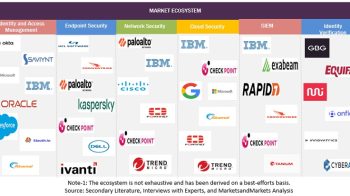
According to a new market research report “IoT Middleware Market by Platform Type (Device, Application, and Connectivity Management), Organization Size (Large Enterprises and SMES), Vertical (Manufacturing, Government & Defense, Automotive & Transportation), and Region – Global Forecast to 2023″, The global IoT middleware market size is expected to grow from USD 6.9 billion in 2018 to USD 19.5 billion by 2023, at a Compound Annual Growth Rate (CAGR) of 23.0% during the forecast period.
Major driving factors for the IoT middleware market are the growing need for centralized monitoring, increased cloud adoption, increase in regulatory compliance, evolution of high speed network technologies, and rising adoption of next-generation technologies.
Browse and in-depth TOC on “IoT Middleware Market”
42 – Tables
43 – Figures
117 – Pages
Why increasing shift toward outcome and pull economies could be a sustainable opportunity?
The outcome economy focuses on pay-per-outcome, wherein the customer is proposed to pay the value of the product depending on its quality, service, and delivery time. Companies need to shift from the linear and isolated supply chains to the value-driven digital ecosystems for ensuring competitiveness. Connected devices and software platforms within the IoT ecosystem enable the aggregation of data and facilitate collaboration across industries, which can create better business relationships and expertise.
The pull economy focuses on 3 important aspects. The first aspect is continuous demand sensing, a process of leveraging new analytical techniques to create an accurate forecast of the market demand and current certainties of the supply chain. The second aspect is end-to-end automation that focuses on connecting devices with all other business processes for better business outcomes. The third aspect is resource optimization and waste reduction, one of the most important aspects of business processes.
Request PDF Brochure @ https://www.marketsandmarkets.com/pdfdownloadNew.asp?id=84839232
How implementation and security remain a key challenge?
As the IoT technology continues to flourish, it will result into developing different risks. Hardware will proceed to advance and improve. Software will turn out to be increasingly advanced. New standards, protocols, and connectivity options will progressively dominate. In order to make IoT services available at low cost with a large number of connecting devices communicating securely to each other, there are many challenges that an organization needs to overcome. One such challenge is to manage a large number of IoT nodes, which requires scalable security solutions. Furthermore, connecting various devices of different capabilities in a secure manner is another challenge in IoT connectivity. IoT devices are vulnerable to various attacks, such as physical, environmental, cryptanalysis, software, and cyber-attacks.
IoT platforms have a complex architecture, as numerous devices are connected to a network that sends data to the cloud. Furthermore, integration with legacy infrastructure causes difficulty in implementing the IoT platform. For instance, a study conducted by Cisco shows that approximately 60% of IoT projects do not make it past the proof-of-concept phase and only 26% of companies could successfully implement the IoT platform.
Content Source: https://www.marketsandmarkets.com/PressReleases/iot-middleware.asp


